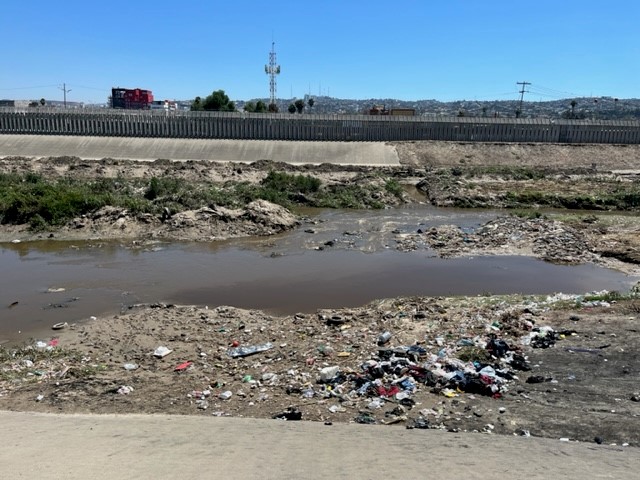
Infrastructure treating Tijuana’s sewage is facing an expected increase in wastewater after Tropical Storm Hilary brought rain to the area, but is expected to return to normal quickly.
Sewage spilled into the ocean from the Tijuana River has remained steady at about 135 million gallons per day since the storm, with a total flow volume of 2 billion gallons, said Frank Fisher, public affairs chief for the U.S. section of the International Boundary and Water Commission. On average, about 35 million gallons of sewage per day pour into coastal waters from Tijuana.
“We expect flow to continue to decline over the next week or two as the watershed dries out,” Fisher said in an email.
The daily flow of sewage into the South Bay International Wastewater Treatment Plant has already returned to the typical 25-30 million gallons per day range.
Transboundary flow, which occurs after major rain events, continued this week but is expected to decrease as the excess water from the storm evaporates. Hilary brought about two inches of rain to the South Bay area.
After rain events, storm water flows into the Tijuana River and is pushed across the U.S.-Mexico border, exacerbating the sewage crisis that has prompted beach closures in beaches as far north as Coronado.
Coronado and Silver Strand Beaches were closed due to excess bacteria levels on Aug. 20, the day Hilary made landfall in San Diego, and have remained closed ever since. Imperial Beach and the Tijuana Slough Shoreline are also closed.
The urban runoff during rain events also brings trash and dead animals into the Tijuana River, further exacerbating bacteria levels. The San Diego Citizens’ Forum Board, a body created by the USIBWC, discussed installing trash booms along the river to catch and then dispose of solid waste at its July meeting.
Fixing the issue has become a matter of funding — or rather, lack of it — and although the U.S. and Mexico agreed last year on projects to mitigate the sewage issue, funding has fallen short.





